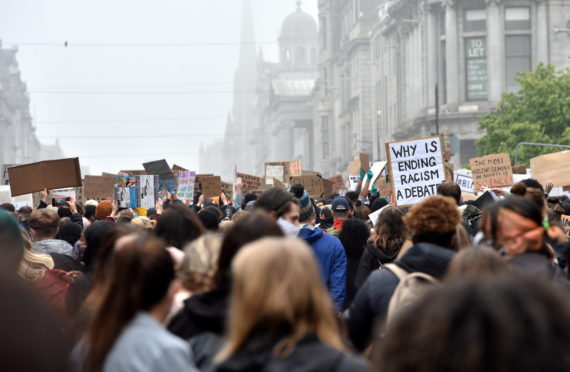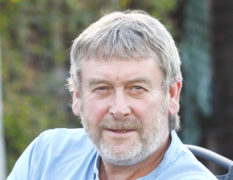The killing of George Floyd by an officer of the Minneapolis Police Department, while other policemen stood by, still reverberates around much of the world. The video footage, taken by an onlooker holding a smartphone, outraged millions internationally.
The death sparked demonstrations across the USA against the police violence endured by generations of African Americans.
The anger crossed the Atlantic in the opposite direction from which the slave ships had taken most of their forebears from Africa in the 17th, 18th and 19th Centuries.
The Black Lives Matter demonstrations held in the UK threw up the all-too-apparent parallels. Prime Minister Boris Johnson responded by promising a commission to address inequality in the UK, despite the existing mountain of reports on the subject.
What is needed is a commission on how to properly educate children and adults alike on: the reality of British imperialism; our role in slavery; and truth of post-Second World War immigration.
Earlier the controversial bronze statue of slave trader Edward Colston was pulled down and thrown into the waters of Bristol harbour, where once his slave ships had lain.
He was in the hierarchy of the Royal African Company. It was responsible for 84,000 Africans being enslaved and transported to the Americas, with an estimated 19,000 dying in the holds of the company’s slave ships.
After Colston’s removal, attention north of the border turned to the statue of Henry Dundas, 1st Viscount Melville, in Edinburgh’s St Andrew Square.
While home secretary in 1792 he was instrumental in delaying the abolition of the Atlantic slave trade by 15 years. This meant half a million enslaved Africans were traded before abolition became law in 1807.
Edinburgh City Council agreed to add a plaque explaining Dundas’s role. The statue would henceforth be dedicated to these “extra” half-million slaves.
Direct descendant Bobby Dundas said people should realise that abolition of the slave trade would have failed to get through parliament had his forebear not moved an amendment adding the word “gradual”.
Scotland’s role in the slave trade had again come into focus.
It wasn’t just the rich. Black Isle-based historian David Alston, who has been researching the subject for many years, wrote an article for P&J online earlier this month. It highlighted the large involvement of “ordinary Scots” in the slave plantations of the Caribbean.
But the last few weeks has highlighted again the extraordinary levels of compensation dispensed by the government in the wake of an 1833 Act of Parliament. While the 1807 legislation abolished the trade in slaves, this one abolished slavery itself in most of the British empire.
Slave owners had to be reimbursed for the loss of their property. That’s how slaves were defined, in itself an indictment of the “Christian” values of imperial Britain.
Nathan Mayer Rothschild and his brother-in-law, Moses Montefiore, two of Europe’s leading bankers, agreed to make a loan to the British government of £15m, to which the government itself later added £5m. The total was equivalent to £300bn in today’s money. But not a penny went to former slaves. The loan was only paid off five years ago.
Much of the money was doubtless spent on what would have been described as public-spirited acts of generosity by the great and the good. Even the monument in Glenfinnan to the Jacobites who died in the 1745 rising, we learned, was built with money made from slavery.
But far more, presumably, was simply retained by the already rich of the time.
Journalist Catherine Bennett recently highlighted just how many of the hereditary peers sitting in today’s House of Lords were descended from those who made fortunes out of the slavery compensation.
Many bought or extended their estates. Some in the Highlands, where new proprietors were joining certain of their indigenous counterparts in clearing their land of people.
To what extent the proceeds of slavery were connected to the evictions and transportation of Scottish Gaels is now the subject of research in a rather unlikely location – Coventry University, right in the middle of England.
One of its research fellows is Dr Iain MacKinnon, a Skye man who started his professional life as a journalist on the West Highland Free Press.
But he was to pursue academic scholarship, publishing a range of papers on the land, culture and heritage of Gaelic Scotland. Last year he began initial investigations into the relationship between those enriched by slavery and the Clearances.
He reports that his initial findings are that about 20% of the landmass of the West Highlands and islands was bought by significant beneficiaries of slavery in the 18th and 19th Centuries. It could be approaching one million acres.
This is important work. Doubtless there were plenty Gaels whose involvement in transporting or “managing” slaves is morally repugnant. But it seems likely that many others were themselves uprooted, directly because of the proceeds of slavery.
The Clearances can’t be compared to the true evil of slavery, but there may have been a circle devoid of any virtue at work, which linked the two. That would be something worth knowing.
David Ross is a veteran Highland journalist and author of an acclaimed book about his three decades of reporting on the region

